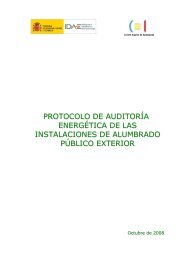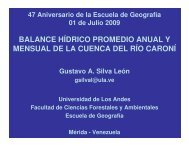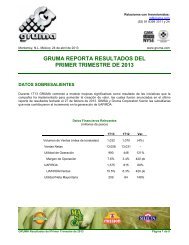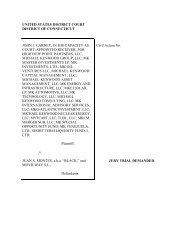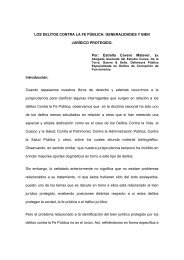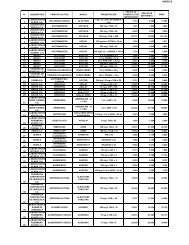broschuere ee zahlen en bf
broschuere ee zahlen en bf
broschuere ee zahlen en bf
You also want an ePaper? Increase the reach of your titles
YUMPU automatically turns print PDFs into web optimized ePapers that Google loves.
5. Calculating avoidance factors and avoided emissions for biofuels<br />
Calculation of the emissions avoided by using biofuels is based on the following key points:<br />
ó Largely based on the typical values of the EU R<strong>en</strong>ewable Energy Directive (2009/28/EC),<br />
supplem<strong>en</strong>ted by IFEU [5]<br />
ó Takes account of the nature and origin of the raw materials used for biofuel production in<br />
Germany and includes imports and exports<br />
ó Allocation of main products and by-products on the basis of lower calorific value<br />
ó Takes account of differ<strong>en</strong>ces in production technologies/<strong>en</strong>ergy supply<br />
The substitution relationships are laid down as follows: 1 kWh bioethanol replaces 1 kWh petrol,<br />
and 1 kWh biodiesel or vegetable oil replaces 1 kWh mineral diesel. No distinction is made<br />
betw<strong>ee</strong>n vehicle emissions arising from biofuels and those from conv<strong>en</strong>tional motor fuels.<br />
The nature of the underlying raw materials and the origin of the raw materials are an important<br />
factor for the size of emission reductions due to the use of biofuels. The following<br />
table provides an overview.<br />
Differ<strong>en</strong>t raw materials’ shares of total biofuels used in Germany, 2010<br />
Rapes<strong>ee</strong>d Soya Palm oil Waste 1) Grain Sugar cane B<strong>ee</strong>ts Other<br />
[%]<br />
Biodiesel 84 11 5 0.4 – – – –<br />
Veget. oil 100 0 0 0 – – – –<br />
Bioethanol – – – – 71 4 25 0<br />
Figures rounded<br />
1) german biodiesel production on the basis of waste is considerably higher.<br />
sources: UBa [75] on the basis of BdBe [82]; VdB [81]; UFoP [93]; gr<strong>ee</strong>npeace [78]; Ble [96]; stBa [95]<br />
The size of the emission reduction is also determined by the emission factors for the various<br />
biog<strong>en</strong>ic and fossil motor fuels. The calculations of gr<strong>ee</strong>nhouse gas emission reductions are<br />
largely based on the typical figures from the EU R<strong>en</strong>ewable Energy Directive (2009/28/EC)<br />
(exception: biodiesel from waste – IFEU [5]). The final step is to determine the net reduction<br />
in CO 2 and all gr<strong>ee</strong>nhouse gases by netting the fossil emissions avoided against the emissions<br />
caused by the use of r<strong>en</strong>ewables. Detailed explanations of the calculation methods and information<br />
on the data sources can be found in UBA [75].<br />
annex: methodological notes<br />
R<strong>en</strong>ewable Energy Sources in Figures<br />
101




